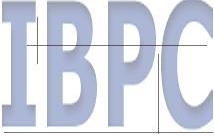The Potato Eaters (1885)
by Ieuan ap HywelThe Writer's Block
First Place, May 2016
Judged by Joan Colby
Five figures, from three generations. Of the three females
a girl sits, her back towards the artist. Two small windows
display the darkness of evening.
Eight rafters run from front to back. The ouders sit on high-backed
chairs with raffia woven seats. Oma schenkt koffie in, Opa holds
out his cup over a table worn rough at the edges.
A lamp shines on vapour rising from a bowl of aardappelen.
They scoop the meal from a common bowl towards them
with reversed spoons. Mevrouw stares past her man,
an arbeider wearing a cap; wide eyed she wonders why.
Their hands presented as lumpy, an accent on the joints,
faces and noses scribed with a bulbous characterisation.
Two luxuries are evident: light and coffee. Such poverty:
no piano, no colour, no caged bird to sing, no literature to
enthral, no Bible to comfort, no paintings on the wall.
The artist has rendered to the core, he has left out: dried herbs and
ham hocks hanging from the ceiling. The family pose awkwardly for
their pastor. He captures their rough-spun clothes. We presume
their linen clean, washed smelling of lye. In his latter days he paints
with primary colours and abandon, with whirls and daring strokes
before the entrance of those crows that cross his wheatfield sky.
A finely-wrought ekphrastic poem that is also a telling commentary on Van Gogh’s evolution as an artist. The poem is wonderfully observant of what is in the painting and what is not. Precise observation evokes all the senses: the smell of lye, the bird that doesn’t sing because he doesn’t exist, the vapour rising from a bowl of aardappeien, the raffia woven chair seats, rough-spun clothes, the eight rafters, the missing Bible. --Joan Colby

